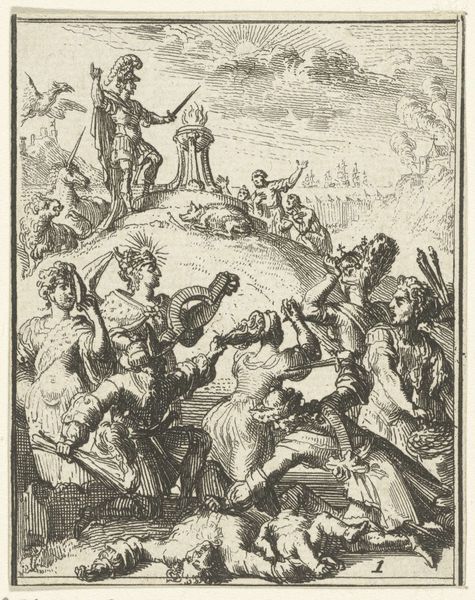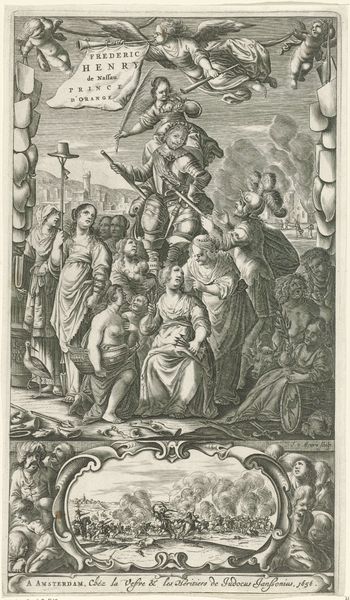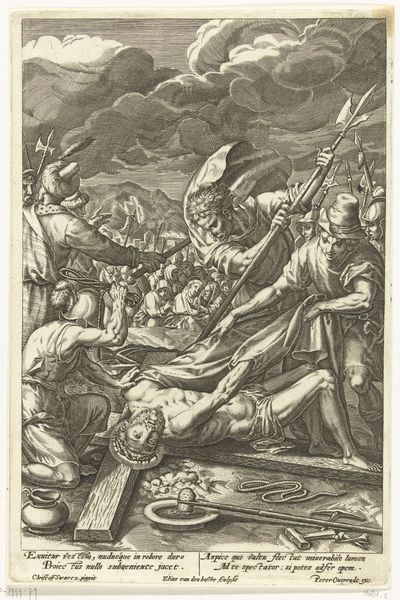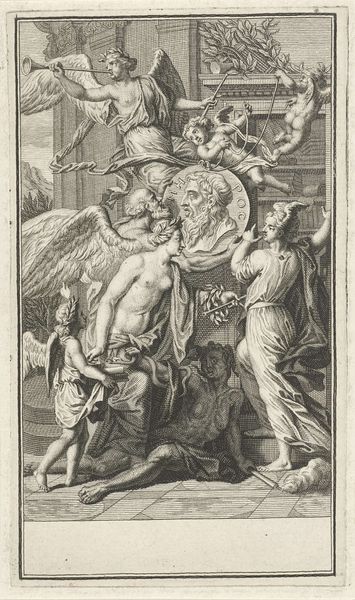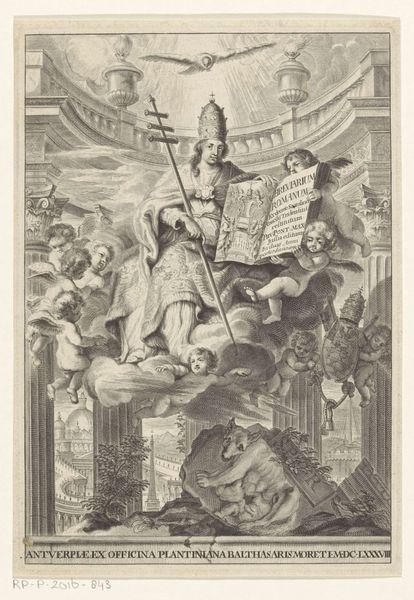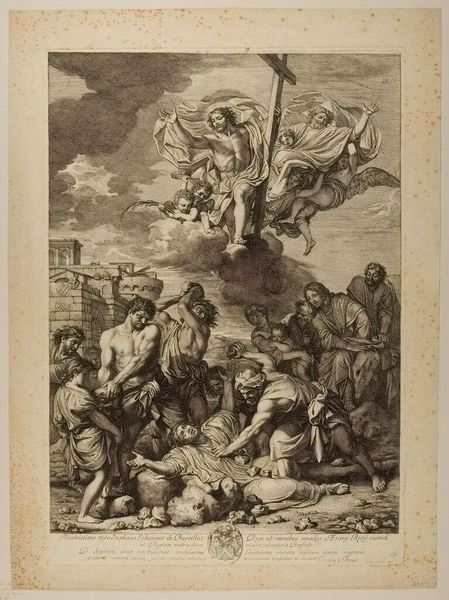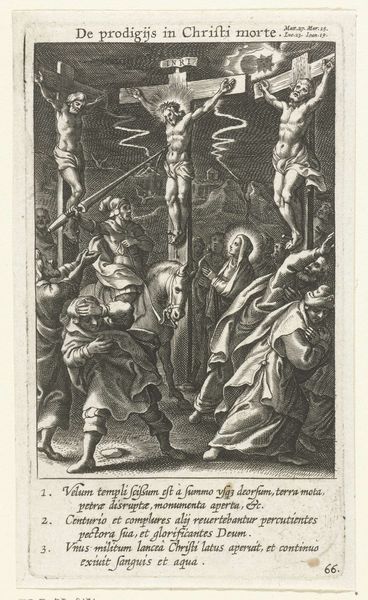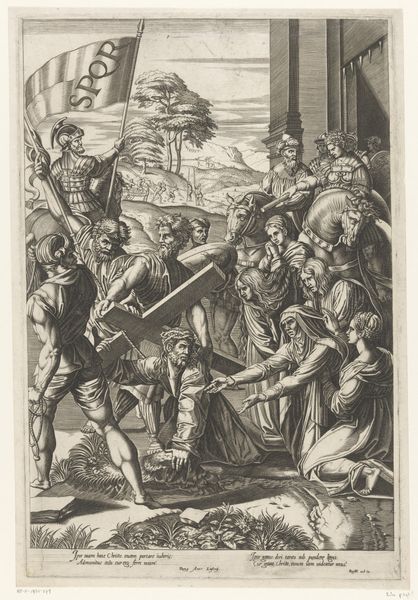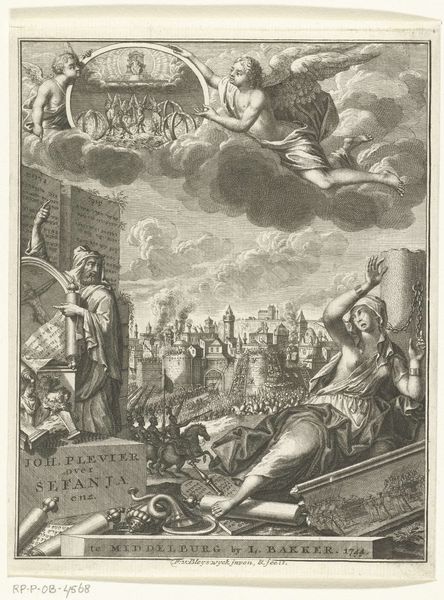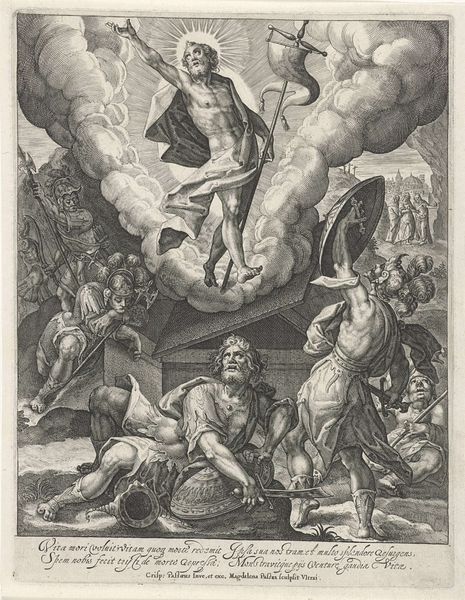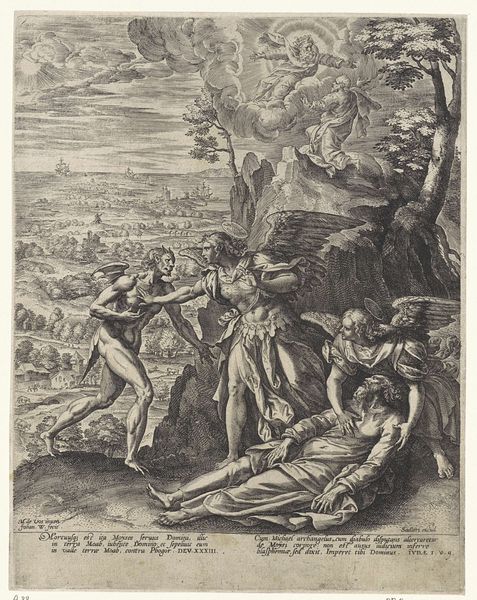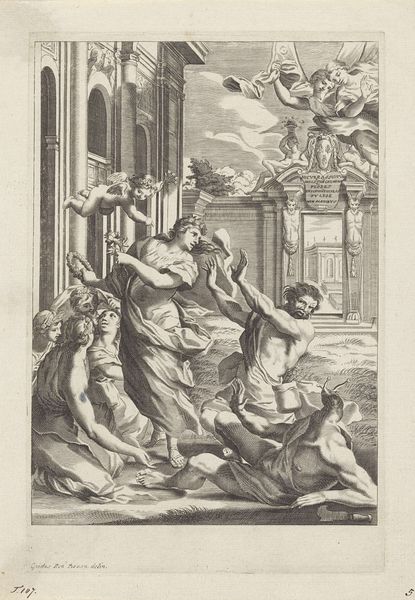
print, engraving
#
narrative-art
#
baroque
# print
#
figuration
#
history-painting
#
engraving
Dimensions: height 135 mm, width 93 mm
Copyright: Rijks Museum: Open Domain
Curator: Cornelis Galle I produced this engraving, "Kruisdraging," sometime between 1586 and 1650. The Rijksmuseum holds it within their collection. Editor: It hits you immediately, doesn't it? The weight of it all—literal and figurative. The starkness of the lines just amplifies the sense of suffering. Curator: Absolutely. Galle's piece depicts the harrowing scene of Christ carrying the cross. Looking at this print, it is vital to recognize its place within the artistic and sociopolitical landscape of its time. Galle, working in the Baroque period, was deeply embedded in the visual rhetoric of power and religion. Editor: And you see so many recurring images: the crown of thorns as a symbol of mockery, the soldiers clad in armor as agents of brutal authority, even the posture of Christ himself—bent but unbroken—it is all loaded with historical meaning and foreshadowing. Curator: Yes, the print speaks volumes about the power dynamics and religious fervor prevalent in 17th-century Europe, especially regarding the depiction of marginalized bodies against systems of power. Notice the sheer density of the composition—figures crammed together, almost suffocating, emphasizing a collective complicity in the suffering. It speaks to the violence inherent within power structures. Editor: What strikes me is the ambivalence of some of those faces, as though violence is banal. Look at the background: the building, the crowd, the gathering storm – they create a claustrophobic sense of impending doom. Everything signifies the unavoidable culmination of Christ's journey. It evokes a powerful feeling of unease. Curator: Galle's choice of printmaking also carries meaning. Prints were more accessible and reproducible, enabling the widespread distribution of this image. The use of stark black and white heightens the emotional impact, making it visually accessible but, even more than that, using art as a tool to proliferate ideology. Editor: So true—it becomes an almost tangible representation of faith, sacrifice, and perhaps even defiance in the face of immense cruelty. Curator: Considering all aspects, "Kruisdraging" functions as both a historical artifact and a lens through which we might view contemporary discussions around social injustice and marginalized identities. Editor: Seeing it that way casts this image as relevant beyond its immediate religious context. It compels us to remember and reflect.
Comments
No comments
Be the first to comment and join the conversation on the ultimate creative platform.
